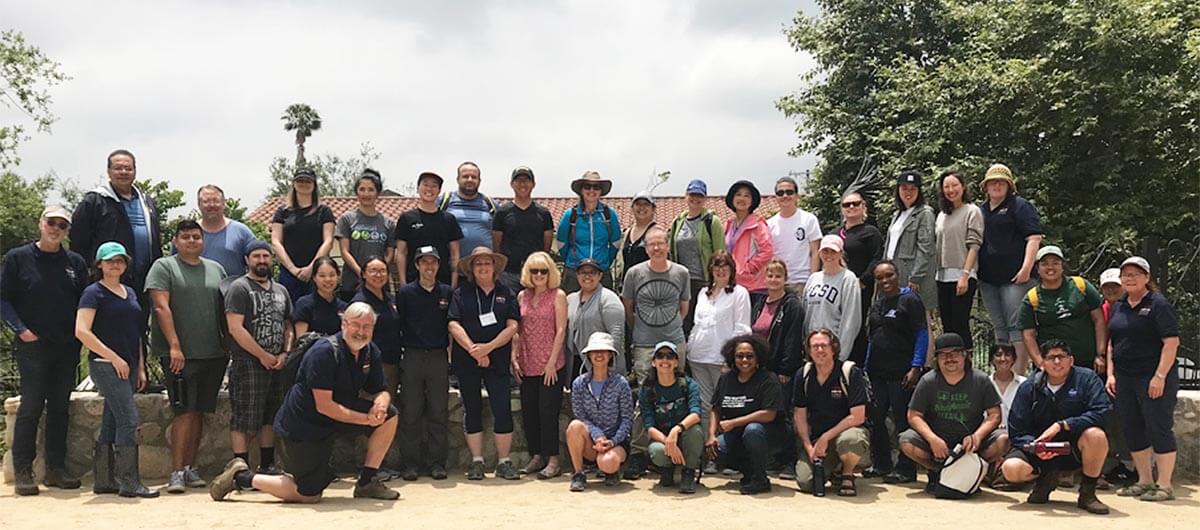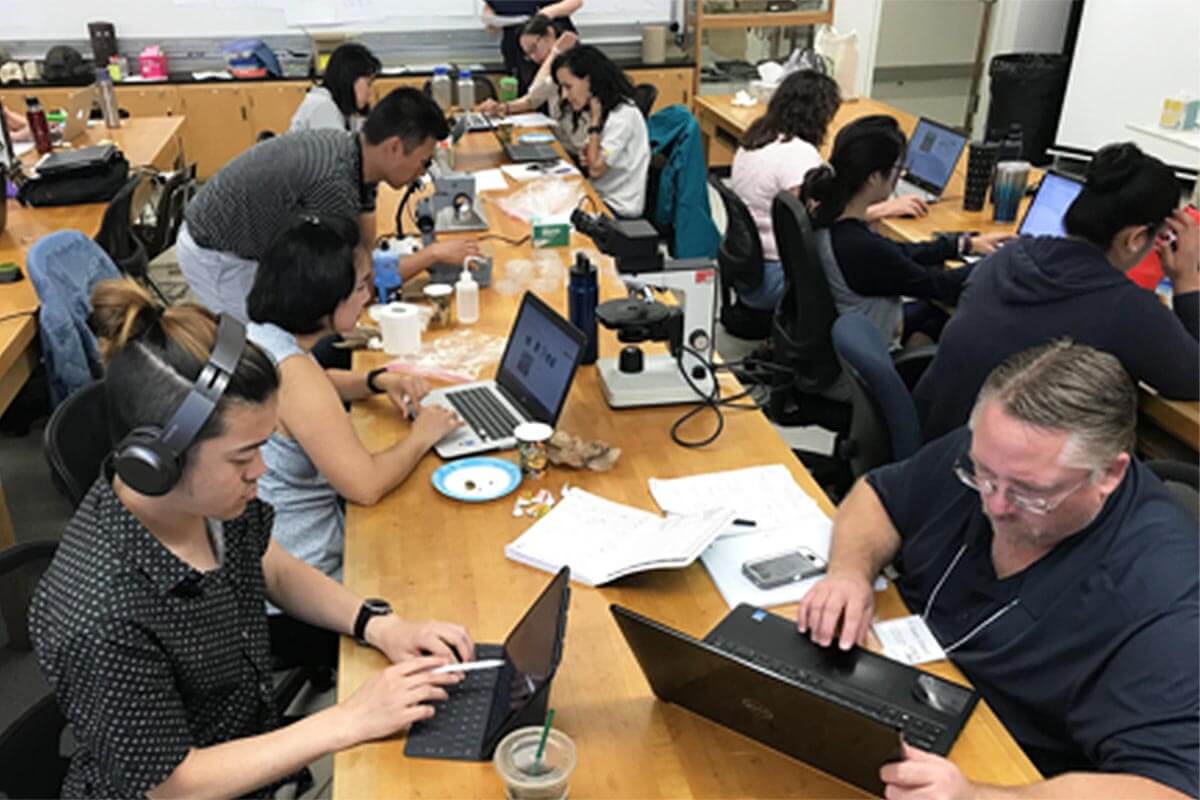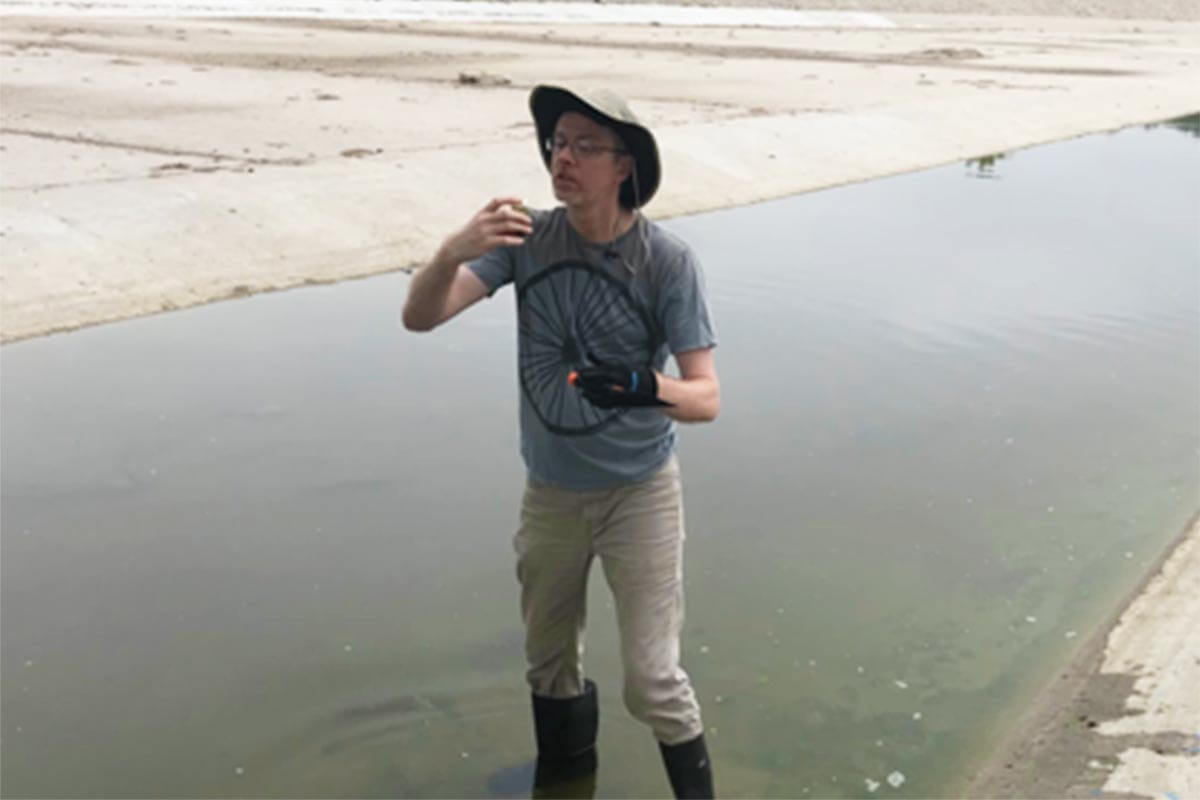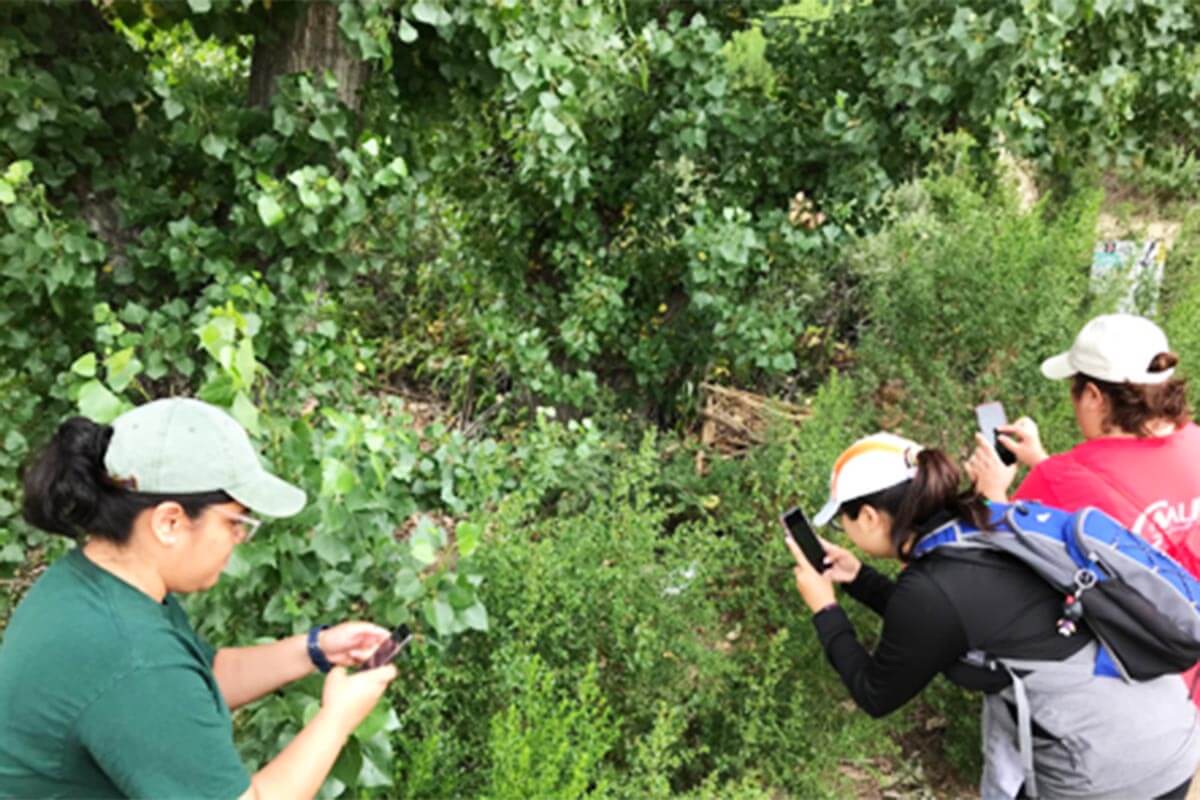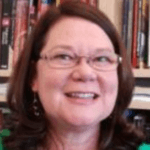For four years, we at the California State University, Northridge, Science Learning Colaboratory have been working with Los Angeles-area science teachers to develop relevant and engaging lessons and activities that integrate California’s Environmental Principles and Concepts (EP&Cs) into the California Next Generation Science Standards (NGSS) secondary school science curriculum. For three years, we have used funding from Ten Strands (via a Leonardo DiCaprio Foundation grant) and the California Science Project to help teachers engage their students in real-life, local, phenomena-based environmental science learning. For the past two years, we have been collaborating with the Friends of the Los Angeles River (FoLAR), a nonprofit organization dedicated to restoring the Los Angeles River as an educational and recreational resource, to develop lessons and activities relevant to Los Angeles youth. This is the story of our thirteen-day journey working with local middle school and high school teachers as they learned how to integrate environmental literacy into their classrooms.
Understanding the Importance of Technical Skills
In an effort to ensure that all teachers possessed the technical skills necessary to develop technology-rich, web-based lessons, we opened the thirteen-day institute with an optional three-day “technology boot camp.” During the boot camp, teachers developed skills in the computer supported collaborative science necessary to develop environmental science lessons that could be shared with the broader educational community.
The California NGSS framework describes how it is essential that students investigate local environmental phenomena for themselves, especially using first-hand experiences in the outdoors. We wanted to present teachers with an example of how this could look in their classrooms, so we framed the first full week (days four through eight) of our institute around the nearby Los Angeles River. With a vision of NGSS-based instruction, driven by local environmental phenomena, institute participants used the second full week (days nine through thirteen) to plan their own 5E (engage, explore, explain, extend, evaluate) lesson sequences to help their students apply the EP&Cs to phenomena appropriate for their grade level. Teachers developed lessons that require students to create models of environmental systems and to employ claims, evidence, and reasoning when generating their explanatory, predictive models.
Week One
In week one of our institute, participants experienced an NGSS lesson sequence as adult learners who investigated environmental phenomena associated with the Los Angeles River. On day one, Friday, they were introduced to the main anchoring phenomenon, a massive flood in the late 1930s, along with the engage section of the 5E lesson sequence. Throughout the week, participants built models and developed investigative questions about the river to help them understand both the natural and human components of the river system.
By day six, Wednesday, the participants developed their own investigative questions about the river system and planned investigations they would implement in the field. Some examples included testing the nitrate levels of the water, observing the flora and fauna, assessing the trash levels, and looking at debris left over from flash flooding during the spring of 2019. We brought in FoLAR’s Los Angeles River Rover (a mobile river classroom) so that participants could experience potential activities and lessons they could implement in their own classrooms and to help them plan their own trips to the river. On day seven, Thursday, we took the entire group on a field trip to the river.
We stopped at four different sites on the river to explore its current flow and evidence of historical highs, the flora and fauna, and the interface between human and natural environments. Participants collected observations and data as they implemented their investigation plan. On day eight, (Friday, we returned to campus and asked participants to analyze their data. (In 2018, we took the field trip on day eight and waited until day nine, after the weekend, to analyze the data. But in 2019, so that we could place more emphasis on data analysis, we moved the field trip up to day seven.)
Week Two
Week two focused on planning lessons around the EP&Cs. We brought back some of the participants from last summer’s institute to help their school-site teams develop the scope and sequence of a unit that centered on local phenomena and that used the EP&Cs to help enhance understanding. We scaffolded the planning time with resources, including an assessment tool that had participants focus on 3D performance tasks. Participants examined assessments on the website for the Stanford NGSS Assessment Project, as well as other assessment websites linked through the Stanislaus County Office of Education. This helped the participants backward-plan their lesson sequences by thinking about where they wanted their students to be at the end of the lesson sequence. We also invited Laura Rodriguez, director of programs at Youth Outside, to come for a day. She led us through some exercises that bring attention to social justice and environmental literacy. The participants felt this was a great experience and that it cultivated rich conversation about the lessons they were building and whether the lessons incorporated the lens of cultural awareness and equity.
The workshop culminated on day thirteen, Wednesday, with the presentation of the participants’ units and lesson plans. Groups presented their work to their peers and workshop leaders for feedback and advice. As we have done in past years, we evaluated their lessons in terms of how effectively they fused environmental education with science instruction. We are pleased to see that in this regard the lessons have improved a bit more every year. On a Likert scale of 1 to 5, with 1 indicating no inclusion and 5 indicating strong inclusion, our averages went from 3 to 3.3 to 3.7.
What We Learned
We helped teachers anchor their lessons in environmental phenomena. One of the goals of the California NGSS framework is that students understand locally relevant environmental phenomena and then design solutions for dealing with them. This focus represents a major shift from lessons organized purely around disciplinary core ideas. In our early years working with teachers, they struggled to envision what such lessons might actually look like—they didn’t have a strong idea of what environmental problems look like in order to identify ones that were locally relevant to their students. Therefore, a major goal of our workshops since has been to help teachers make this shift. To help us accomplish this goal, we developed a rubric for assessing how central environmental phenomena were to the lessons teachers codeveloped with their school site or grade-level team during our summer institutes.
What the Teachers Learned
We received some great feedback from the teachers we worked with, some of which we share here.
“We learned about the importance of making EVERYTHING in our classes phenomena-centered, from instruction to assessment. In addition, we learned how to take each PE of the NGSS and really break it down to understand exactly what students should be able to do and how.” ~ Eric, middle school teacher
“We incorporated the Los Angeles River experience ideas, such as the Los Angeles River model and information acquired during our first week of the program. We also incorporated the EP&Cs, which I was not aware of before attending the summer institute. We made sure to incorporate cultural relevance when planning our curriculum.” ~ Caroline, high school teacher
“[I plan to teach EP&Cs by integrating them] throughout life science—heavy incorporation within the instructional segments [for] ecosystems, stability, and human impact—but also within other units as I find that students can relate to the world around them, the environment is a stellar starting or launching point, or it works for them to apply concepts to.” ~ Debbie, high school teacher
“I am so grateful for the opportunity to learn and collaborate with other science teachers. My knowledge of planning and implementing the California NGSS framework definitely expanded. I look forward to developing more lesson sequences and seeing how the tech tools I learned how to use could enhance student learning.” ~ Sandra, high school teacher
Thank you for the opportunity to share what we have learned. We now want to challenge teachers to really take a look at their local surroundings and identify an environmental phenomena, whether it is as broad as problems with a local watershed or as narrow as the lack of plants in their schoolyard. Opportunities for environmental science learning experiences are all around us!

